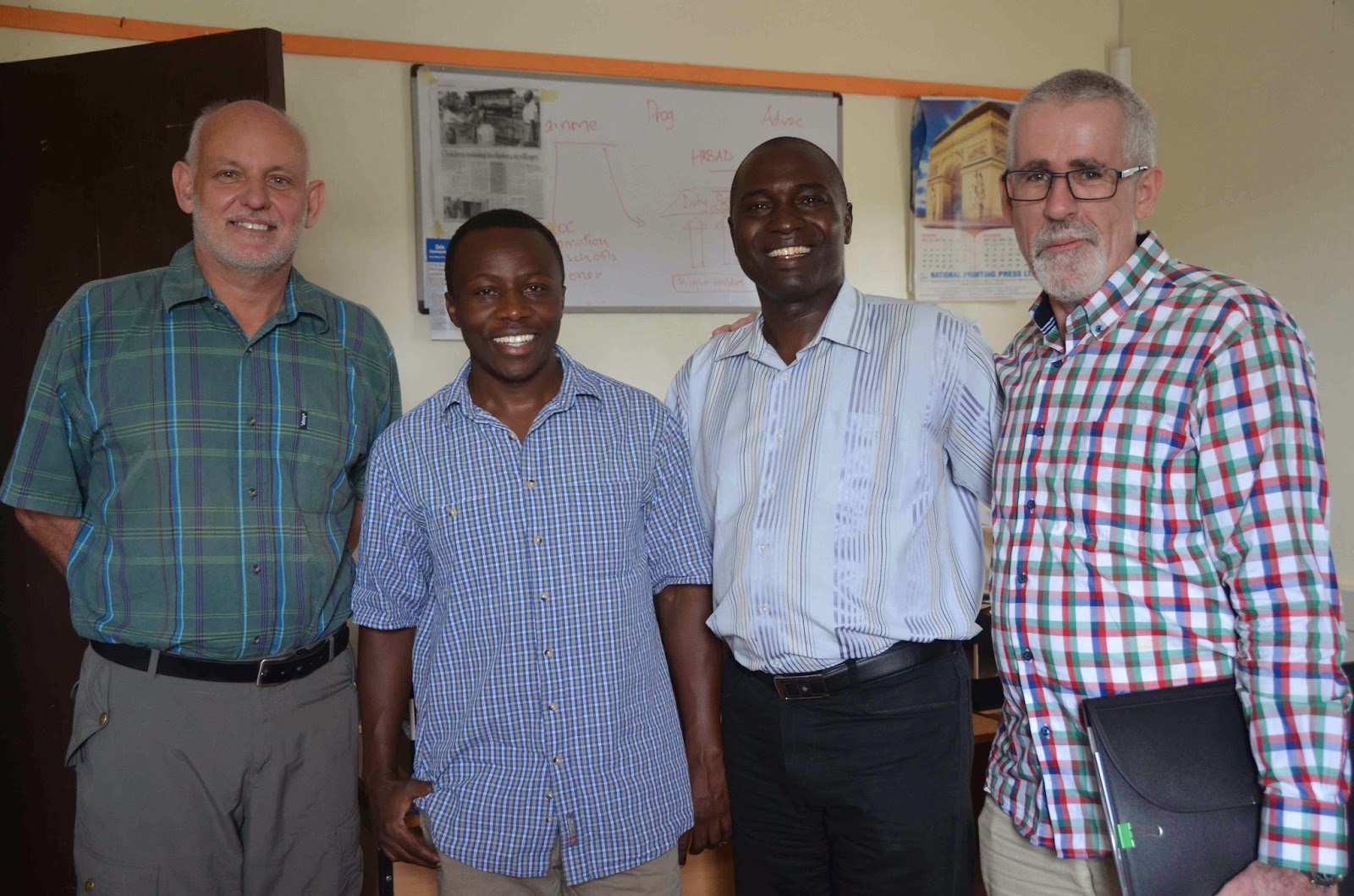The four of
us had a quiet morning and headed off at two thirty p.m. to the Masai Mara game
reserve. I was excited, but expecting a similar experience to Amboseli. Even
though Masai Mara is world-famous, I had my expectations set too low. Masai
Mara is awesome!
Within five
minutes of entering the park we had seen elephant, giraffe, zebra, gazelle and
wildebeest. And the wildebeest! Present in the hundreds of thousands dotted
all over the landscape.
And the
landscape has more hills and valleys than Amboseli. It also seemed greener, but
that is probably due to the time of the year. It was classic African savanna,
and we were all very impressed. The vistas down the valley, with animals in
abundance, really took our breath away.
We had
Moses with us, a Masai guide who knew the park like the back of his hand. After
all, it was his home. Moses explained after about an hour that the hardest
animal to spot was a rhino, because they were extremely shy (believe it or
not). Two minutes later, as we rounded a bend, we spotted two rhinos about 50
metres away. Moses could not stop telling us how lucky we were.
So, within
an hour we had seen three of the “big five” – elephant, buffalo and rhino. We
only had lion and leopard to go, and there was still 90 minutes left in our
afternoon safari. To this list you can add topi, eland, eagle, vulture, ostrich, mongoose, impala, buffalo (pronounced Boofalo by Moses) and warthog. However, the cats proved elusive. We drove to all the
places where Moses assured us lions lived, with no success. He showed us a tree
where he said he had seen a leopard on five recent occasions. Still no success.
As we were
heading out of the park we noticed an unusually large number of safari vehicles
gathering around a certain spot on the creek. Moses was sure that it must be
lion. He was right!
We had to
cross the creek bed first, and thanks to Des’ good driving it was accomplished
with minimal damage. On a rock 50 metres from the others was a young male lion,
sitting alone. Then, closer to the creek was another three lions resting in the
long grass. It was my first close encounter with the king of the beasts,
spoiled slightly by the crush of vehicles and the fact that we had (illegally,
we later learned) left the gravel road to get closer to the lions.
After
taking our 60 second turn, we started heading back to camp. A torrential
afternoon downpour began not two minutes after seeing the lions. The sky went
dark and the rain came pouring down. Thunder echoed across the valley and it
was our second awesome display of nature for the afternoon.
Three hours
in Masai Mara and we had seen so much. Can’t wait for tomorrow, we still have
to find that leopard.
Day Three
We have now left the park, but what an experience. Seeing the Mara River, where the wildebeest cross is amazing, even though none were crossing. The river was littered with the carcasses of wildebeest that had not survived the crossing.
Driving along we also came across hyenas and vultures arguing over a fresh kill. They took no notice of us and we managed to take some good photos.
Over the three days we also spotted three separate prides of lions, managing to get very close on one occasion - as the photos suggest. They are amazing beasts who know that nothing can intimidate them - they watch calmly as twenty vehicles gather around their hiding place.
Leaving the park yesterday we had a stroke of good luck, spotting a cheetah sitting beside a mound of dirt not 20 metres from our car.
We also had a stroke of bad luck - two actually. Two flat tyres, one completely ripped and the spare which did not last three kilometres. It is interesting changing a tyre with the fear of being eaten!
If you ever get a chance to visit Masai Mara, do it!
Here is my photo essay. Enjoy.
 |
| "Do you know how fortunate you are to see these?" |
 |
| Yes, I fiddled with this to make it look "arty" |
 |
| A lion dreaming about ...? |
 |
| Which one is Harry the happy hippo? |
 |
| A roller bird? |
 |
| On the border of Tanzania and Kenya (inside Masai Mara) |
 |
| Dead wildebeest - smelly and disgusting, but nature often is! |
 |
| A boofalo - you don't get the sense of their huge bulk in this photo |
 |
| Part of the 1.5 million wildebeest within the park |
 |
| THE cheetah |
 |
| This fella looked like he had just gone through liposuction - look at the loose skin |
 |
| Quick, quick, the lions are coming! |
What an amazing creation we live in. I do hope that these animals can be conserved for future generations.



















